 |
| Kathmandu Durbar Square, 1852 Watercolor painted by Henry Ambrose Oldfield (1822-1871). |
Kathmandu Durbar Square (Nepal Bhasa: येँ लायकु/𑐥𑐾𑑄 𑐮𑐵𑐫𑐎𑐹, Nepali: हनुमानढोका दरबार/ Basantapur Durbar Kshetra) is a historically and culturally significant site in Kathmandu, Nepal. It is one of the three Durbar (royal palace) Squares in the Kathmandu Valley in Nepal that are UNESCO World Heritage Sites.
Although the construction of the square began in the 3rd century, the major structures within it were added in later periods. The outer complex consists of a number of 16th-century temples built during the reign of Malla kings. These buildings are adorned with meticulously carved facades characteristic to Newar architecture. The central square is surrounded by palace complexes built during the Malla and Shah periods.[1] The most well-known among them is the Nautalle Durbar, a nine-story palace built by Prithvi Narayan Shah to commemorate the Unification of Nepal.[2]
A three-story temple called Kumari Chouk or Kumari Bahal is located at the southern edge of the Durbar square. This Malla-era temple is used as the resident of the Kumari, a young girl worshipped as a living embodiment of the Hindu Goddess Durga. [ Wiki pedia]
จัตุรัสกาฐมาณฑุดูร์บาร์ (เนปาล : येँ लायकु/𑐥𑐾𑑄 𑐮𑐵𑐫𑐎𑐹 เนปาลี: हनुमानढोका दरबार/ Basantapur Durbar Kshetra) เป็นสถานที่ที่มีความสำคัญทางประวัติศาสตร์และวัฒนธรรมในเมืองกาฐมาณฑุ ประเทศเนปาล เป็นหนึ่งในสามจัตุรัส Durbar (พระราชวัง) ในหุบเขากาฐมาณฑุในประเทศเนปาลที่ได้รับการขึ้นทะเบียนเป็นมรดกโลกโดยองค์การยูเนสโก
แม้ว่าการก่อสร้างจัตุรัสจะเริ่มขึ้นในศตวรรษที่ 3 แต่โครงสร้างหลักๆ ภายในจัตุรัสก็ถูกเพิ่มเติมเข้ามาในช่วงหลังๆ กลุ่มอาคารด้านนอกประกอบด้วยวิหารหลายแห่งในศตวรรษที่ 16 ที่สร้างขึ้นในสมัยของกษัตริย์มัลลา อาคารเหล่านี้ประดับด้วยส่วนหน้าอาคารที่แกะสลักอย่างพิถีพิถันซึ่งมีลักษณะเฉพาะตามสถาปัตยกรรม Newar จัตุรัสกลางล้อมรอบไปด้วยพระราชวังที่สร้างขึ้นในสมัยมัลลาและชาห์ ที่มีชื่อเสียงที่สุดคือ Nautalle Durbar ซึ่งเป็นพระราชวังเก้าชั้นที่สร้างโดย Prithvi Narayan Shah เพื่อรำลึกถึงการรวมชาติเนปาล
วิหารสามชั้นที่เรียกว่า Kumari Chouk หรือ Kumari Bahal ตั้งอยู่ทางตอนใต้ของจัตุรัส Durbar วิหารสมัยมัลลาแห่งนี้ใช้เป็นที่พำนักของกุมารี ซึ่งเป็นเด็กสาวที่ได้รับการบูชาในฐานะตัวแทนที่มีชีวิตของเทพีทุรคาในศาสนาฮินดู [ วิกิพีเดีย ]
Go4Get@Napal Napal🇳🇵Day9
7โมงเช้า เราเดินเท้าจากที่พักที่เป็นย่านร้านค้าขายเสื้อผ้าและของใช้สำหรับนั่งท่องเที่ยวที่จะไปเทรกกิ้งขึ้นหิมาลัย จากย่านนี้ก็จะเข้าสู่ย่านร้านค้าของคนท้องถิ่น แต่ร้านค้าส่วนใหญ่ยังไม่เปิดมีเพียงพวกขายของกินตอนเช้า ผู้คนเตียงกายด้วยสีสด ไปในทางเดียวกับสีที่ใช่ทาตกแต่งกับสีตกแต่งอาคารร้านค้า


Attractions of Kathmandu Durbar Square
The Kathmandu Square is a major cultural and religious hub in Nepal, with many important temples and shrines located within its confines. It is a bustling hub of activity surrounded by narrow winding streets lined with shops, temples, and traditional brick houses, making it a great place to explore and experience local culture. In this section, we will discuss the major attractions you shouldn’t miss in Kathmandu Durbar Square.
สถานที่ท่องเที่ยวของจัตุรัสกาฐมาณฑุดูร์บาร์
จัตุรัสกาฐมา ณ ฑุเป็นศูนย์กลางทางวัฒนธรรมและศาสนาที่สำคัญในประเทศเนปาล โดยมีวัดและศาลเจ้าที่สำคัญหลายแห่งตั้งอยู่ในขอบเขต ที่นี่เป็นศูนย์กลางของกิจกรรมที่คึกคักรายล้อมไปด้วยถนนแคบๆ ที่คดเคี้ยวซึ่งเรียงรายไปด้วยร้านค้า วัด และบ้านอิฐแบบดั้งเดิม ทำให้ที่นี่เป็นสถานที่ที่ดีเยี่ยมในการสำรวจและสัมผัสวัฒนธรรมท้องถิ่น ต่อไปนี้เราจะเข้าสู่สถานที่ท่องเที่ยวสำคัญที่คุณไม่ควรพลาดในจัตุรัสกาฐมาณฑุดูร์บาร์
Best Time of the day to Visit
If you prefer a more tranquil experience with fewer crowds, visiting the square in the morning is recommended. During this time, the square tends to be less crowded, allowing you to explore the various landmarks and attractions at your leisure.
However, if you don't mind crowds and want to experience the lively atmosphere of the square, the afternoon is the best time for you to visit. The square tends to be busier in the afternoon as more tourists and locals come to the area. You can also shop for hand-crafted souvenirs at the local stalls.
The square tends to be less crowded in the evening, offering a peaceful visit after the crowds have dispersed. The square is also beautifully lit in the evening, making it an excellent time for photography. It is a great time to take a break from the city bustle in the peaceful atmosphere of Kathmandu Durbar Square.
While the square is open to visitors at all times of the day, it tends to be less crowded in the morning and evening. So, it's up to you and your preference. No matter when you choose to go, the square offers a unique cultural and historical experience that is sure to be memorable.
Opening hours and Entry fees
Opening hours: The square itself is open 24/7 but some of the places inside are only open between 9 am to 6 pm. The opening time may vary depending on the occasion so it's always a great idea to confirm with the concerned authorities before visiting.
SAARC National | NPR 150 Per Person |
Other Nationals | NPR 1000 Per Person |
There is no entrance fee for Nepalese citizens. The residents of SAARC countries other than Nepal have to pay NRs. 150 for a ticket. Visitors from any other countries will be charged NRs. 1000. Children below 10 years old don't require entry tickets. The ticket usually covers the charge for all attractions except the museums inside the square so you won’t have to pay anything extra after paying the entrance fee upfront.

Taleju Bhawani Temple
Taleju Bhawani Temple is one of Nepal's oldest and most important Hindu temples. This temple is dedicated to the goddess Taleju Bhawani, who is believed to be the reincarnation of the goddess Durga. Goddess Taleju Bhawani is believed to have granted kingship to the Malla Kings, who ruled over Kathmandu from the 12th to 18th centuries and hence became their guardian deity (Kul Deuta).
Taleju Temple is built in Nepali architectural style in the shape of a “yantra”, a mystical diagram holding magical power. It has a golden roof and is covered with ornate decorations and intricate carvings. The temple is made on top of a multi-tiered platform, surrounded by a tall stone wall. It has a central shrine dedicated to the goddess Taleju Bhawani, represented by a statue.
วัดตะเลชุภวานีเป็นหนึ่งในวัดฮินดูที่เก่าแก่และสำคัญที่สุดของเนปาล วัดนี้อุทิศให้กับเทพีตะเลชุ ภาวานี ซึ่งเชื่อกันว่าเป็นการกลับชาติมาเกิดของเทพีทุรคา เชื่อกันว่าเทพธิดาตะเลชุ ภาวานีได้มอบตำแหน่งกษัตริย์ให้กับกษัตริย์มัลลา ผู้ปกครองกาฐมา ณ ฑุตั้งแต่ศตวรรษที่ 12 ถึง 18 และด้วยเหตุนี้จึงกลายเป็นเทพผู้พิทักษ์ของพวกเขา (กุลเดตา)
On a lower platform of this pyramidal structure, there are 12 smaller shrines dedicated to other deities. The inside of the temple is adorned with articulate paintings of heavenly events and wooden carvings of deities. A large bell at Taleju Bhawani Temple's entrance is rung to announce the start and end of a worship session. The four main decorative gates are guarded by hand-carved stone lions.
บนแท่นด้านล่างของโครงสร้างทรงปิรามิดนี้ มีศาลเจ้าเล็กๆ 12 แห่งที่อุทิศให้กับเทพเจ้าองค์อื่นๆ ภายในวัดประดับประดาด้วยภาพเขียนเหตุการณ์สวรรค์ที่ชัดเจนและงานแกะสลักไม้รูปเทพ จะมีการตีระฆังขนาดใหญ่ที่ทางเข้าวัดตะเลชุ ภาวานี เพื่อประกาศการเริ่มต้นและสิ้นสุดการสักการะ ประตูประดับหลักทั้งสี่บานมีสิงโตหินแกะสลักด้วยมือคอยปกป้อง
The temple is open to the public only on Maha Navami, the ninth day of Navaratri for a very brief period. Even during Maha Navami, only Hindus are allowed to visit the temple; non-Hindus are restricted and can only observe from outside the temple.วัดเปิดให้บุคคลทั่วไปเข้าชมได้เฉพาะวันมหานวมีซึ่งเป็นวันที่ 9 ของนวราตรีในช่วงเวลาสั้นๆ เท่านั้น แม้แต่ในช่วงมหานวมี มีเพียงชาวฮินดูเท่านั้นที่ได้รับอนุญาตให้เยี่ยมชมวัดได้ ผู้ที่ไม่ใช่ชาวฮินดูจะถูกจำกัดและสามารถสังเกตได้จากภายนอกวัดเท่านั้น
Kumari Ghar and The Living Goddess
Kumari Ghar is a palace dedicated to the Kumari, a young girl revered as the living goddess in Hindu and Buddhist traditions of Nepal. She is believed to be the living manifestation of the goddess Taleju Bhawani. Kumari is considered the symbol of good fortune and prosperity.
Kumari Ghar เป็นพระราชวังที่อุทิศให้กับ Kumari เด็กสาวที่ได้รับการเคารพในฐานะเทพธิดาที่มีชีวิตในประเพณีฮินดูและพุทธศาสนาของประเทศเนปาล เชื่อกันว่านางคือร่างที่ยังมีชีวิตของเทพธิดาตะเลชุ ภาวานี กุมารีถือเป็นสัญลักษณ์ของความโชคดีและความเจริญรุ่งเรือง
Kumari Ghar is a traditional, Newari-style building with a red brick exterior and intricately carved wooden windows and doors. It has several rooms and courtyards and is surrounded by a stone wall. Every day at around 9-11 am and 4-6 pm, Kumari makes an appearance on the balcony facing the courtyard of Kumari Ghar. Numerous people visit there every day to catch a glimpse of the living goddess.
Kumari Ghar เป็นอาคารสไตล์ Newari แบบดั้งเดิมที่มีภายนอกด้วยอิฐสีแดง หน้าต่างและประตูไม้แกะสลักอย่างประณีต มีหลายห้องและลานภายใน และล้อมรอบด้วยกำแพงหิน ทุกวันเวลาประมาณ 9.00-11.00 น. และ 16.00-18.00 น. Kumari จะปรากฏตัวบนระเบียงที่หันหน้าไปทางลานของ Kumari Ghar ผู้คนจำนวนมากมาเยี่ยมชมที่นั่นทุกวันเพื่อชมเทพีผู้ยังมีชีวิตอยู่
Kasthamandap
Kasthamandap, which translates to “wooden pavilion”, is a temple dedicated to the god Gorakhnath in Kathmandu Durbar Square. It is said to have been built in the 12th century from the wood of a single tree by King Laxmi Narsingha Malla. The temple is named after the tree from which it was made, the "kastha" tree, which is also known as the "sala" tree.
Kasthamandap ซึ่งแปลว่า "ศาลาไม้" เป็นวัดที่อุทิศให้กับเทพเจ้า Gorakhnath ในจัตุรัส Kathmandu Durbar กล่าวกันว่าสร้างขึ้นในศตวรรษที่ 12 จากไม้ต้นเดียวโดยกษัตริย์ลักษมี นาร์ซิงฮา มัลลา วัดนี้ตั้งชื่อตามต้นไม้ที่ใช้สร้าง ซึ่งก็คือต้น "กัสถะ" หรือที่เรียกกันว่าต้น "ศาละ"
It is believed that the name of the city Kathmandu is derived from Kasthamandap. The 3-storied temple was used as a rest house for travelers and a place for people to perform religious rituals and ceremonies. But in the earthquake of 2015, the Kasthamandap Temple was completely destroyed. The quake caused the collapse of the temple's roof and walls, leaving the temple in a state of disrepair.
เชื่อกันว่าชื่อเมืองกาฐมา ณ ฑุ มาจากคำว่า กาฐมณฑป วัด 3 ชั้นแห่งนี้ใช้เป็นที่พักสำหรับนักเดินทางและเป็นสถานที่ประกอบพิธีกรรมทางศาสนา แต่ในเหตุการณ์แผ่นดินไหวเมื่อปี พ.ศ. 2558 วัดกัสตมันทัพก็ถูกทำลายลงอย่างสิ้นเชิง แผ่นดินไหวครั้งนี้ทำให้หลังคาและผนังของวัดพังทลายลง ทำให้วัดอยู่ในสภาพทรุดโทรม
The Kasthamandap Temple underwent extensive renovations and repairs in the aftermath of the earthquake. The temple was restored to its former glory, and the roof and walls were rebuilt using traditional techniques and materials. The restoration work was completed in early 2022, and the temple was reopened to the public.
 |
| Gorakshanath shrine inside the Kasthamandap |
Kasthamandap Temple is once again a popular tourist attraction and place of worship for the Hindus in Nepal. The temple is a testament to the resilience and determination of the Nepalese people, who worked hard to rebuild and restore their cultural and historical landmarks in the aftermath of the earthquake.
The great bell and two large drums
The great bell and two large drums of Kathmandu Durbar Square are two iconic landmarks that have been a part of the city's cultural and social fabric for centuries. The great bell, also known as the "Golden Bell," is an enormous brass bell that hangs in a tower overlooking the Durbar Square.
ระฆังใหญ่และกลองขนาดใหญ่สองตัวของจัตุรัสกาฐมา ณ ฑุดูร์บาร์เป็นสถานที่สำคัญสองแห่งที่เป็นส่วนหนึ่งของโครงสร้างทางวัฒนธรรมและสังคมของเมืองมานานหลายศตวรรษ ระฆังใหญ่หรือที่รู้จักกันในชื่อ "ระฆังทอง" เป็นระฆังทองเหลืองขนาดมหึมาที่แขวนอยู่บนหอคอยตระหง่านเหนือจัตุรัสดูร์บาร์
The Great Bell is one of the world's largest bells, and it's deep, resonant sound can be heard throughout the city. The bell is traditionally rung to mark important events, such as the start of festivals or the arrival of important visitors. It is also rung to ward off evil spirits and bring good luck to the city.
The two large drums, known as "dhimay," are equally iconic. These massive drums are made of wood and are covered with animal hides. They are played with wooden sticks and produce a deep, booming sound that can be heard for miles. The drums are traditionally played at ceremonies and to announce important news or events to the community. กลองขนาดใหญ่ 2 กลองที่เรียกว่า "ดิไม" มีลักษณะโดดเด่นไม่แพ้กัน กลองขนาดใหญ่เหล่านี้ทำจากไม้และหุ้มด้วยหนังสัตว์ พวกเขาจะตีด้วยท่อนไม้แท่งไม้ให้เสียงที่ลึกและดังกังวานซึ่งสามารถได้ยินได้เป็นระยะทางหลายไมล์ ประเพณีตีกลองในพิธีและเพื่อประกาศข่าวหรือเหตุการณ์สำคัญให้ชุมชนทราบ
Despite being centuries old, the big bell and giant two drums of Kathmandu Durbar Square are still an integral part of the city's cultural life. They are symbols of the city's past, present, and future.
แม้จะมีอายุหลายศตวรรษ แต่ระฆังขนาดใหญ่และกลองขนาดยักษ์ 2 ใบของจัตุรัสกาฐมา ณ ฑุดูร์บาร์ก็ยังคงเป็นส่วนสำคัญของชีวิตทางวัฒนธรรมของเมือง เป็นสัญลักษณ์ของอดีต ปัจจุบัน และอนาคตของเมือง
The Image of Kal Bhairav
Kal Bhairav is a Hindu deity who is associated with death, destruction, and transformation. He is depicted as a fierce and powerful deity with a wrathful expression and is often depicted holding a trident and a bowl made from a human skull. Kaal Bhairav was considered the judge, jury, and executioner in ancient times.
Kal Bhairav เป็นเทพในศาสนาฮินดูที่เกี่ยวข้องกับความตาย การทำลายล้าง และการเปลี่ยนแปลง เขาถูกพรรณนาว่าเป็นเทพที่ดุร้ายและทรงพลังด้วยการแสดงออกถึงความโมโห และมักถูกบรรยายว่าถือตรีศูลและชามที่ทำจากกะโหลกศีรษะมนุษย์ Kaal Bhairav ถือเป็นผู้พิพากษา คณะลูกขุน และผู้ประหารชีวิตในสมัยโบราณ
The image of Kal Bhairav in Basantapur Durbar is a particularly important and revered representation of the deity. The 12 feet tall Kal Bhairav statue is believed to have been carved from a single stone centuries ago. According to legends, it was found in a paddy field by King Pratap Malla. He then installed the statue near the old royal palace in the 17th century.
รูปของ Kal Bhairav ใน Basantapur Durbar เป็นตัวแทนเทพเจ้าที่สำคัญและได้รับความเคารพนับถือเป็นพิเศษ รูปปั้น Kal Bhairav สูง 12 ฟุต เชื่อกันว่าแกะสลักจากหินก้อนเดียวเมื่อหลายศตวรรษก่อน ตามตำนานเล่าว่า พระเจ้าประทับมัลละพบในนาข้าว จากนั้นทรงตั้งรูปปั้นไว้ใกล้พระราชวังเก่าเมื่อพุทธศตวรรษที่ 17
The figure played the role of the Supreme Court in the old times. It was believed that anyone who lied in front of the painting would be punished by Kal Bhairav himself. There is a long line of devotees waiting to worship the black-painted sculpture of the lord every day, surrounding the shrine with incense, flowers, and other offerings.
บุคคลดังกล่าวมีบทบาทเป็นศาลฎีกาในสมัยก่อน เชื่อกันว่าใครก็ตามที่โกหกหน้าภาพวาดจะถูกลงโทษโดย Kal Bhairav เอง มีผู้ศรัทธาต่อแถวยาวเพื่อมาสักการะรูปปั้นสีดำขององค์พระผู้เป็นเจ้าทุกวัน โดยมีธูป ดอกไม้ และเครื่องบูชาอื่นๆ ล้อมรอบศาล
Shiva Parvati Temple
Shiva-Parvati temple lies on the southwest side of the Basantapur Durbar square. Located in the heart of Kathmandu, the Shiva-Parvati Temple is a two-story, rectangular building that stands out among the other temples in the city with its singular roof. It was constructed towards the end of the 18th century, during the rule of Rana Bahadur Shah.
Formally known as the “Navadurga” temple, Shiva Parvati temple is an ode to the nine manifestations of the goddess Durga. The ground level of this temple is dedicated to Navadurga. Whereas, the upper level has statues of lord Shiva and Parvati gazing across the Kathmandu Durbar Square from a window/balcony hence, giving the name to the temple.
Devotees are allowed to worship the temple from the outside but only priests and temple custodians are allowed to enter the temple.
Gaddi Baithak Palace
Gaddi Baithak is a traditional throne room located in Kathmandu Durbar Square in Nepal. It was the official residence and throne room of the Malla kings of Kathmandu, who ruled the city from the 12th to the 18th centuries.
The Malla kings were known for their patronage of the arts and their support of cultural and religious institutions. Despite the abolition of the monarchy in 2008, the Gaddi Baithak remains an important attraction for visitors and a symbol of Nepal's cultural and historical identity.
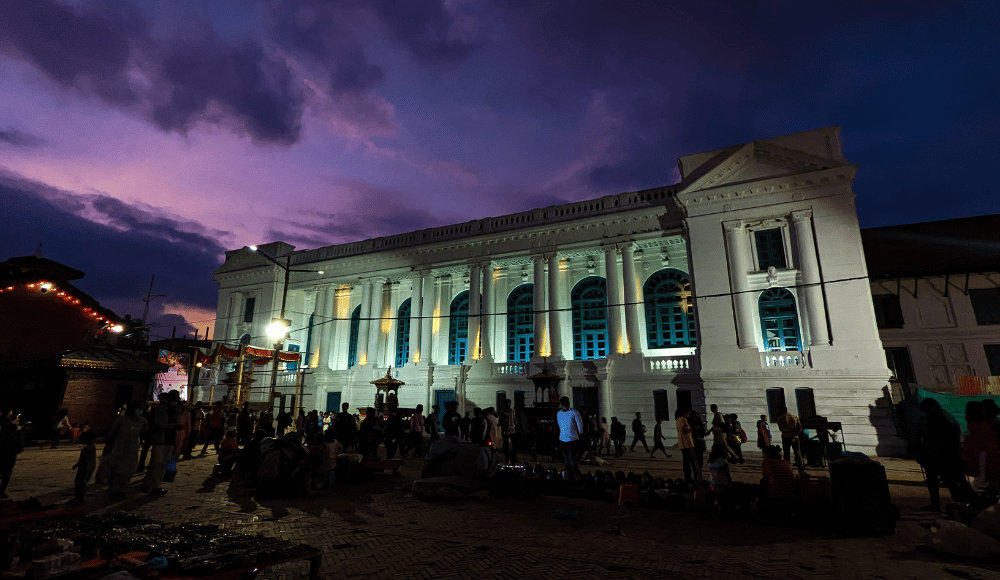
The Gaddi Baithak is an ornately decorated room located within the Hanuman Dhoka palace complex in Durbar Square. It is furnished with a throne and several ceremonial chairs and is adorned with intricate wood carvings, paintings, and other works of art.
The Gaddi Baithak was used by the Malla kings for a variety of purposes, including receiving important guests, holding meetings with government officials, and issuing royal decrees. It was also the site of important ceremonies and rituals, such as coronations and
Today, Gaddi Baithak is open for the public to visit. It is a reminder of the city’s royal past. Visitors can tour the room and learn about the history and cultural significance of the throne room.
Indra Jatra
Indra Jatra, also referred to as "Yenya" in Nepal Bhasa, is a significant festival celebrated by the Newar community in Nepal for eight days. The festival is held in honor of Indra, the god of rain, and takes place either in September or October according to the lunar calendar.
Indra Jatra หรือที่เรียกกันว่า "Yenya" ในภาษาเนปาล Bhasa เป็นเทศกาลสำคัญที่ชุมชน Newar ในประเทศเนปาลเฉลิมฉลองเป็นเวลาแปดวัน เทศกาลนี้จัดขึ้นเพื่อเป็นเกียรติแก่พระอินทร์ เทพเจ้าแห่งฝน และจัดขึ้นในเดือนกันยายนหรือตุลาคมตามปฏิทินจันทรคติ
The celebration starts with the raising of the Linga(symbolic pole) in Durbar Square, followed by a procession featuring masked dancers and musicians. The Kumari Jatra, in which the living goddess Kumari is paraded through the streets of Kathmandu, is one of the most notable events of the Indra Jatra.
การเฉลิมฉลองเริ่มต้นด้วยการยก Linga (เสาสัญลักษณ์) ในจัตุรัส Durbar ตามด้วยขบวนที่มีนักเต้นและนักดนตรีสวมหน้ากาก กุมารีจาตราเป็นพิธีแห่เทพีกุมารีที่มีชีวิตไปตามถนนในกาฐมา ณ ฑุ เป็นหนึ่งในกิจกรรมที่โดดเด่นที่สุดของพระอินทร์จาตรา
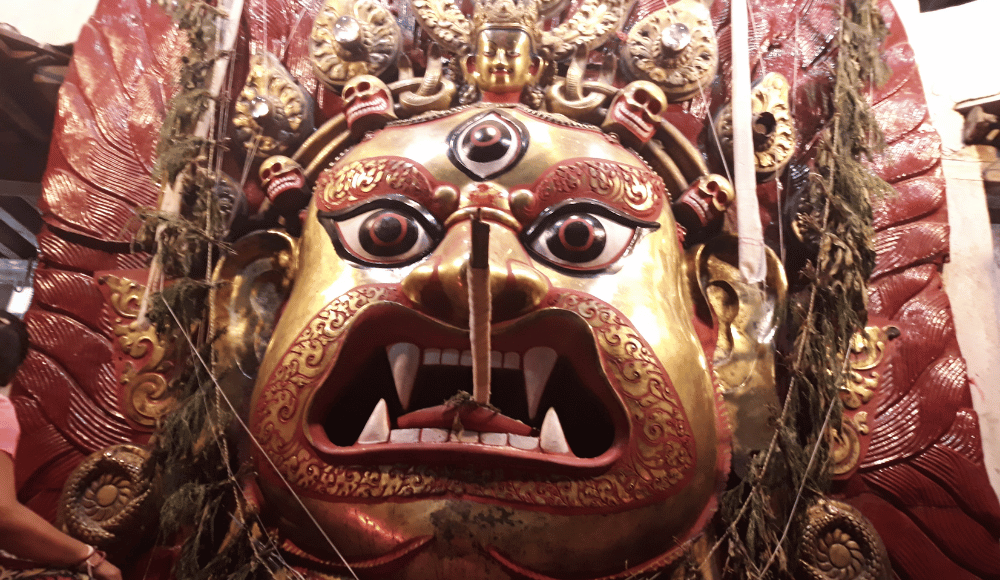
Indra Jatra was first celebrated back in the Licchavi period (3rd to 9th centuries) as a harvest festival. In the past, the festival used to mark the end of the monsoon season, denoting the beginning of dry months.
The festival is also represented by the display of the sacred mask of Bhairava, the guardian deity of the city. The festival of Indra Jatra ends with the lowering of the (lingam) pole bearing Indra's flag amidst religious ceremonies. It is a must-see event for anyone looking to explore the festivals of Kathmandu Valley.
Gai Jatra
Gai Jatra, also called the festival of sarcasm, is typically celebrated in August for a whole week in Kathmandu Valley. Gai Jatra initially began as a way to honor the deceased and help guide their souls to the afterlife. During this time, various rituals and ceremonies are performed along with several cultural programs held in the city.
During the Gai Jatra festival, a variety of traditional dances are performed. These include the Pulu Kisi, a dance performed by young boys dressed in cow costumes, the Dapha and the Dhime, which are both performed by drummers, and the Lakhe, a dance performed by men dressed in demon-like costumes.
One of the main highlights of Gai Jatra is the procession of cows through the streets of Kathmandu, which is led by young boys dressed in cow costumes. The procession is accompanied by a variety of musicians and dancers and is followed by a large crowd of people.
Overall, Gai Jatra is an important cultural and religious festival for the Newar community in Kathmandu, celebrated with great enthusiasm and joy. It is a time for people to come together and pay their respects to the deceased, and celebrate the many blessings that the gods and goddesses have bestowed upon them.
Religious Significance
Kathmandu Durbar Square is a significant religious site in Nepal, home to a number of temples and other religious structures that are revered by Hindus and Buddhists alike. These structures are important places of worship for people of these faiths and are visited by thousands of devotees each year.
จัตุรัสกาฐมา ณ ฑุดูร์บาร์เป็นสถานที่ทางศาสนาที่สำคัญในประเทศเนปาล ซึ่งเป็นที่ตั้งของวัดหลายแห่งและสิ่งปลูกสร้างทางศาสนาอื่นๆ ที่ได้รับความเคารพนับถือจากชาวฮินดูและชาวพุทธ โครงสร้างเหล่านี้เป็นสถานที่สักการะที่สำคัญสำหรับผู้ที่นับถือศาสนาเหล่านี้ และมีผู้ศรัทธามาเยี่ยมชมหลายพันคนในแต่ละปี
One of the main religious attractions in the square is the Hanuman Dhoka Palace, named after the Hindu god Hanuman. The palace was the former royal palace of the Nepal Malla kings. It consists of several temples, including the temple of Hanuman, which dates back to the 16th century.
สถานที่ท่องเที่ยวทางศาสนาหลักแห่งหนึ่งในจัตุรัสคือพระราชวังหนุมานโดกา ซึ่งตั้งชื่อตามเทพเจ้าในศาสนาฮินดูหนุมาน พระราชวังแห่งนี้เคยเป็นพระราชวังเดิมของกษัตริย์มัลลาแห่งเนปาล ประกอบด้วยวัดหลายแห่ง รวมถึงวัดหนุมานที่มีอายุตั้งแต่ศตวรรษที่ 16
The palace also has several Buddhist shrines, including the temple of Kumari, the living goddess, who is revered by both Hindus and Buddhists. The palace is considered a sacred site and is visited by devotees seeking spiritual guidance and blessings. Another important religious site in the square is the Temple of Taleju, dedicated to the Hindu goddess Taleju.
In addition to these major sites, the square is also home to the Kasthamandap Temple, which is revered by both Hindus and Buddhists, as well as other temples and shrines, such as the Shiva-Parvati Temple and the Kal Bhairav Temple. Overall, Kathmandu Durbar Square is a vibrant proof of spiritual and religious diversity in Nepal.
นอกจากสถานที่สำคัญเหล่านี้แล้ว จัตุรัสแห่งนี้ยังเป็นที่ตั้งของวัดกัสตะมันดับ ซึ่งได้รับการเคารพนับถือจากทั้งชาวฮินดูและพุทธ เช่นเดียวกับวัดและศาลเจ้าอื่นๆ เช่น วัดพระศิวะ-ปาราวตี และวัดกัลไภรพ โดยรวมแล้ว จัตุรัสกาฐมา ณ ฑุดูร์บาร์เป็นข้อพิสูจน์ที่ชัดเจนถึงความหลากหลายทางจิตวิญญาณและศาสนาในเนปาล
Cultural Significance
Kathmandu Durbar Square is a central hub of culture and history in Nepal, boasting a variety of landmarks, events, and religious structures that showcase the country's rich cultural heritage. Kathmandu Durbar Square has everything from dazzling temples and palaces to bustling festivals.
จัตุรัสกาฐมา ณ ฑุดูร์บาร์เป็นศูนย์กลางของวัฒนธรรมและประวัติศาสตร์ในประเทศเนปาล โดยมีสถานที่สำคัญ งานกิจกรรม และสิ่งปลูกสร้างทางศาสนาที่หลากหลาย ซึ่งแสดงถึงมรดกทางวัฒนธรรมอันมั่งคั่งของประเทศ จัตุรัสกาฐมา ณ ฑุดูร์บาร์มีทุกสิ่งตั้งแต่วัดและพระราชวังอันตระการตา ไปจนถึงเทศกาลที่คึกคัก
The Taleju temple, Kasthamandap, Shiva-Parvati temple, and Kal Bhairava temple all of them attract a large number of devotees to the square every day. The devotees perform the worshiping rituals and seek spiritual guidance and blessings. Even though all of these temples lie in the same vicinity, they all have their cultural significance and meanings.
วัดตะเลชุ, กาฐมาณฑป, วัดพระศิวะ-ปาราวตี และวัด Kal Bhairava ล้วนดึงดูดผู้นับถือศรัทธาจำนวนมากมาที่จัตุรัสทุกวัน ผู้ศรัทธาประกอบพิธีกรรมบูชาและขอคำแนะนำทางจิตวิญญาณและพร แม้ว่าวัดเหล่านี้จะอยู่ในบริเวณใกล้เคียงกัน แต่วัดเหล่านี้ล้วนมีความสำคัญและความหมายทางวัฒนธรรมของตนเอง
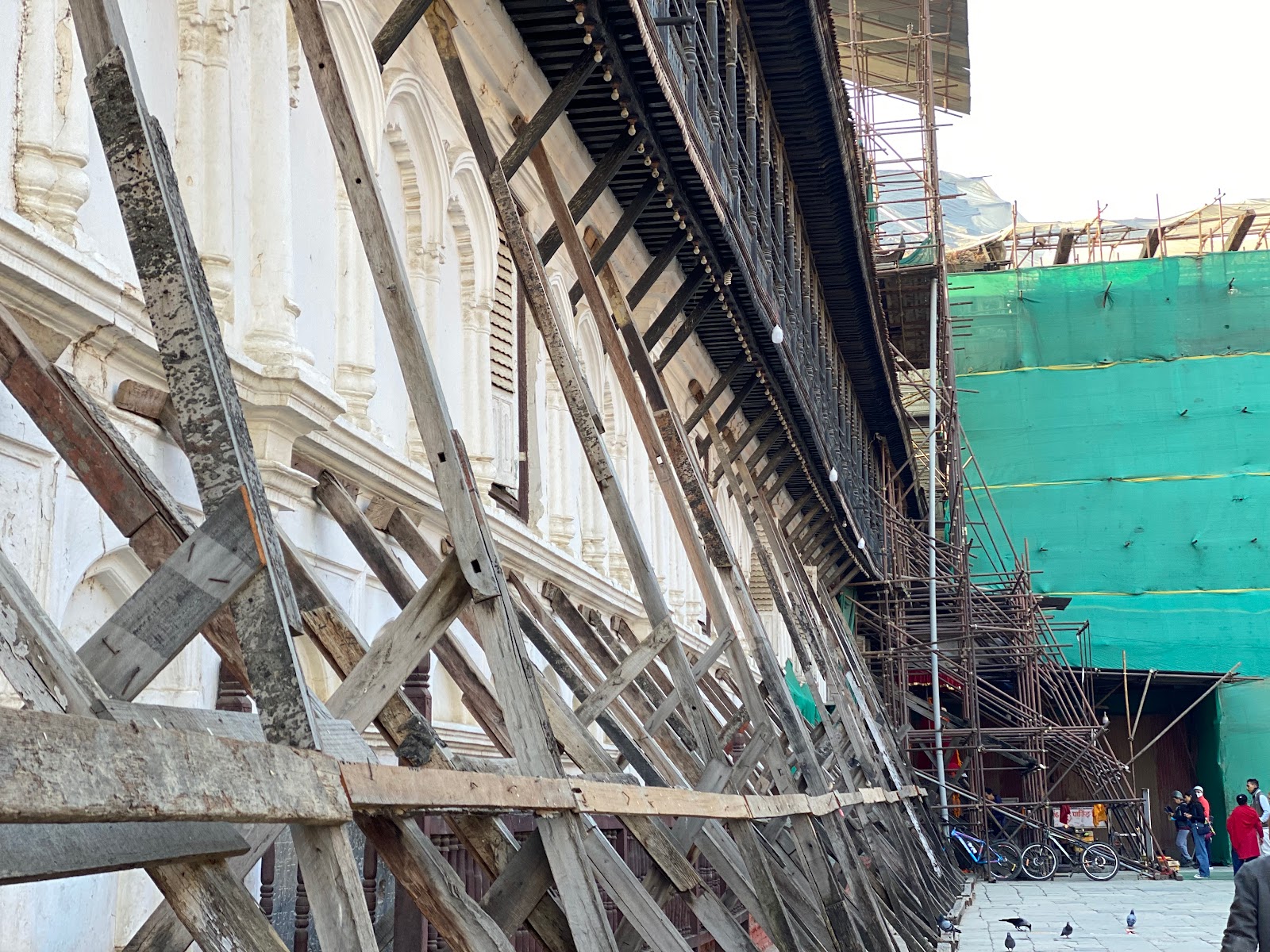
ลักษณะที่ทำให้จัตุรัสกาฐมา ณ ฑุดูร์บาร์แตกต่างออกไปก็คือการอยู่ร่วมกันของศาสนาและวัฒนธรรมที่แตกต่างกันในที่เดียวกัน จัตุรัสแห่งนี้เป็นที่ตั้งของวัดและศาลเจ้าหลายแห่งซึ่งเป็นที่นับถือของชาวฮินดูและชาวพุทธ สะท้อนให้เห็นถึงความอดทนทางวัฒนธรรมและศาสนา และการอยู่ร่วมกันซึ่งเป็นจุดเด่นของประเทศเนปาล
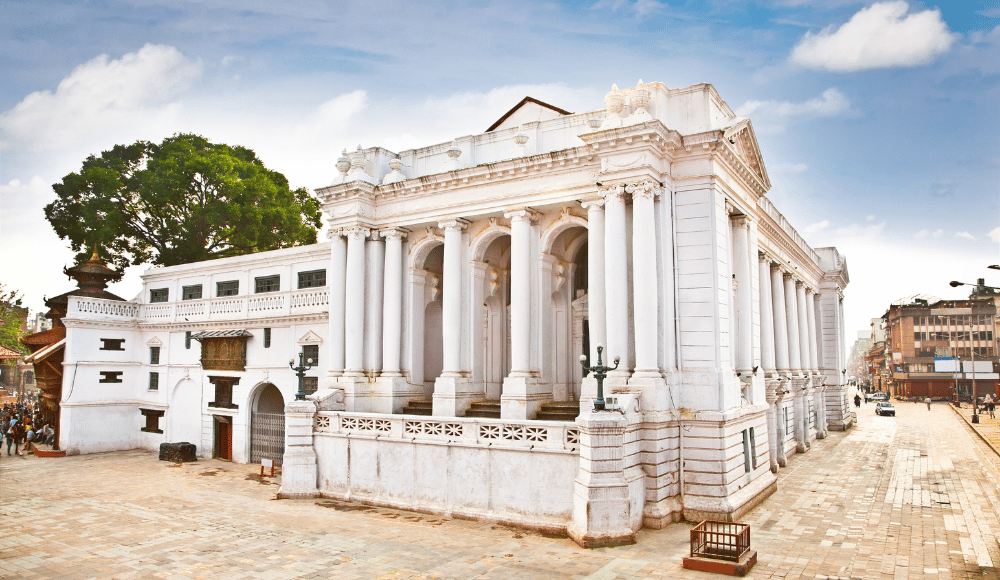
Events such as Indra Jatra and Gai Jatra are important cultural traditions in Nepal. They provide an opportunity for people to come together and celebrate their cultural heritage. The square is a unique and enriching destination for people of all faiths, offering a glimpse into Nepal's culture, history, and traditions.
กิจกรรมต่างๆ เช่น Indra Jatra และ Gai Jatra เป็นประเพณีทางวัฒนธรรมที่สำคัญในประเทศเนปาล พวกเขาเปิดโอกาสให้ผู้คนมารวมตัวกันและเฉลิมฉลองมรดกทางวัฒนธรรมของพวกเขา จัตุรัสแห่งนี้เป็นจุดหมายปลายทางที่มีเอกลักษณ์และมีคุณค่าสำหรับคนทุกศาสนา โดยนำเสนอวัฒนธรรม ประวัติศาสตร์ และประเพณีของเนปาล
Asan
Asan is one of the popular tourist spots in the city because of its architectural sights and charming ambience. There are banks, restaurants and a post office. Two taxi stands and bus stops are situated on the eastern side.
On 25 April 2015, an earthquake with an estimated magnitude of 7.9 (Mw) hit the region and severely damaged the Square, reducing several buildings to rubble, the most prominent of which was the centuries-old wooden structure, Kasthamandap.
Six streets converge in Asan, giving the square a perpetual bustle.The bazaar in Asan attracts shoppers from all over Kathmandu because of the tremendous variety of merchandise sold here, ranging from foodstuffs, spices and textiles to electronics and bullion.
ถนนทั้งหกสายมาบรรจบกันที่อาซัน ทำให้จัตุรัสมีความคึกคักตลอดเวลา ตลาดในอาซันดึงดูดนักช้อปจากทั่วกาฐมา ณ ฑุ เนื่องจากมีสินค้าจำหน่ายมากมายที่นี่ ตั้งแต่อาหาร เครื่องเทศ และสิ่งทอ ไปจนถึงอุปกรณ์อิเล็กทรอนิกส์และทองคำแท่ง
เมื่อวันที่ 25 เมษายน พ.ศ. 2558 แผ่นดินไหวขนาดประมาณ 7.9 (Mw) กระทบภูมิภาคนี้ และสร้างความเสียหายแก่จัตุรัสอย่างรุนแรง ส่งผลให้อาคารหลายหลังพังทลายลง โดยอาคารที่โดดเด่นที่สุดคือโครงสร้างไม้เก่าแก่หลายศตวรรษ กัสตะมันทัพ
อาซันยังเป็นหนึ่งในสถานที่ท่องเที่ยวยอดนิยมของเมืองเนื่องจากมีสถานที่ท่องเที่ยวทางสถาปัตยกรรมและบรรยากาศที่มีเสน่ห์ มีธนาคาร ร้านอาหาร และที่ทำการไปรษณีย์ จุดจอดแท็กซี่และป้ายรถเมล์สองแห่งตั้งอยู่ทางด้านตะวันออก
ตามเส้นทางเดินกลับที่พักที่ Thamel เพื่อเดินทางกลับกรุงเทพเมืองฟ้าอมร
ขอขอบคุณ Gatai Kanjeakpong ที่เอื้อเฟื้อภาพ











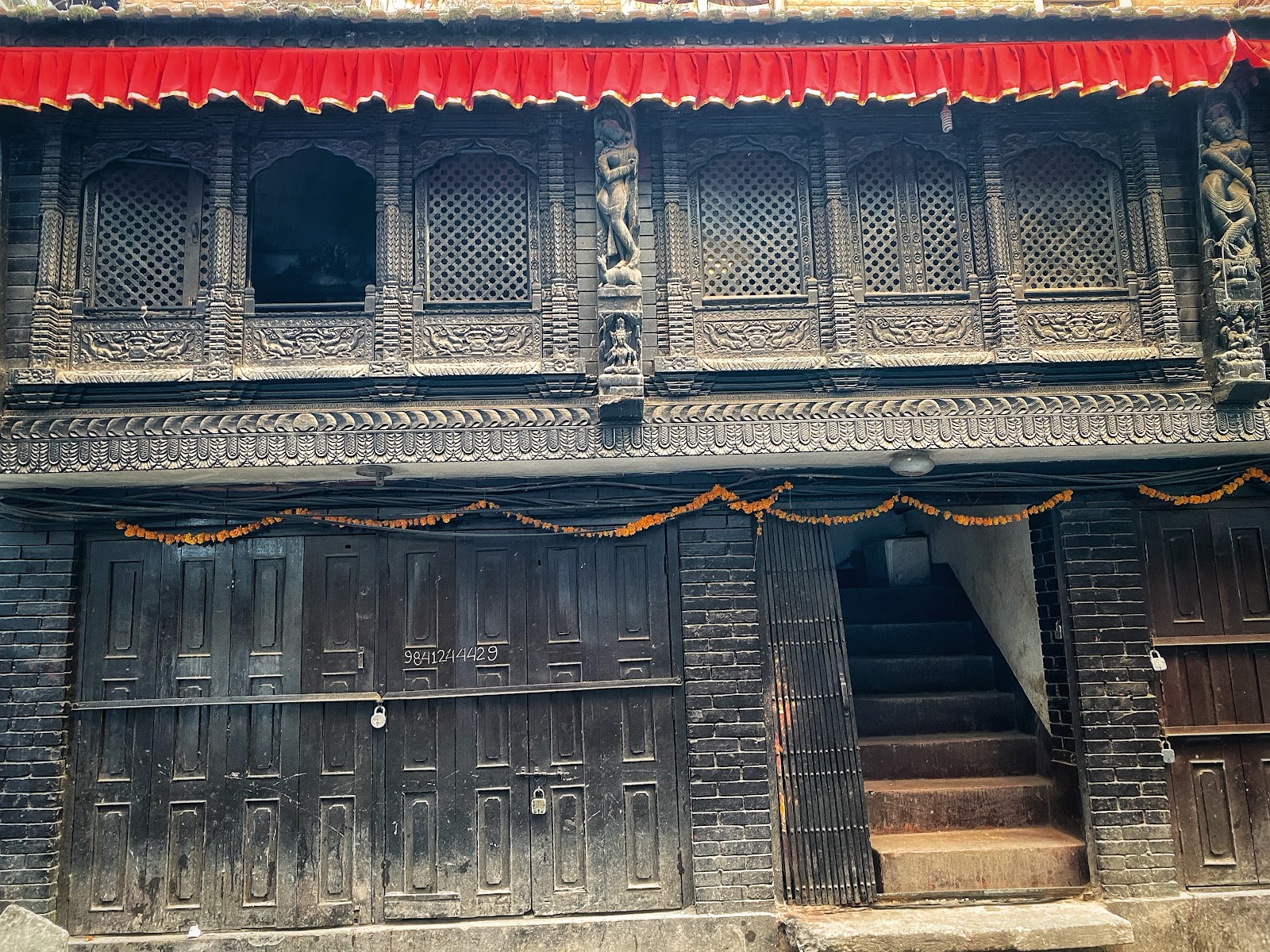














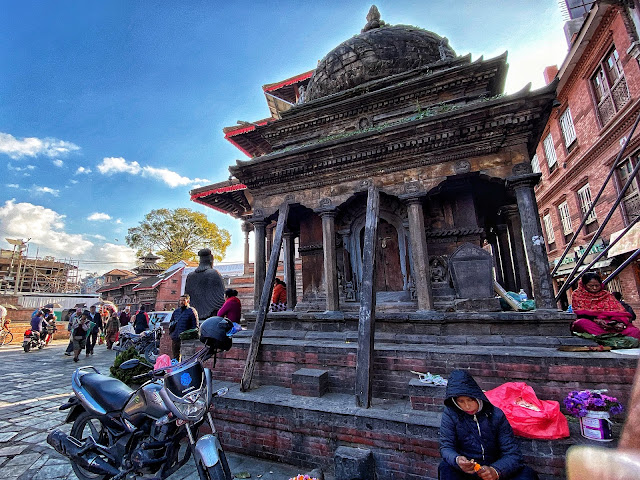





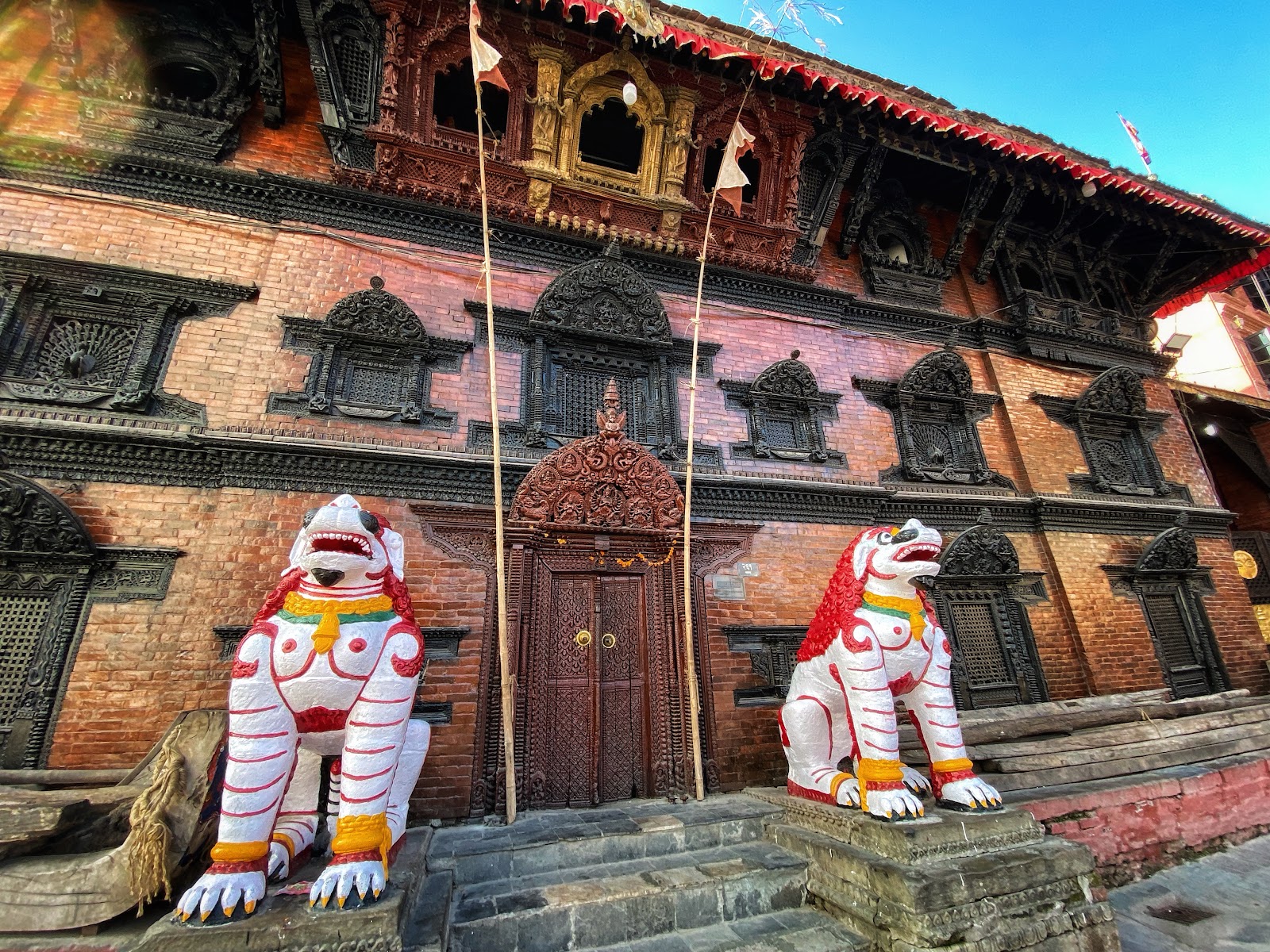




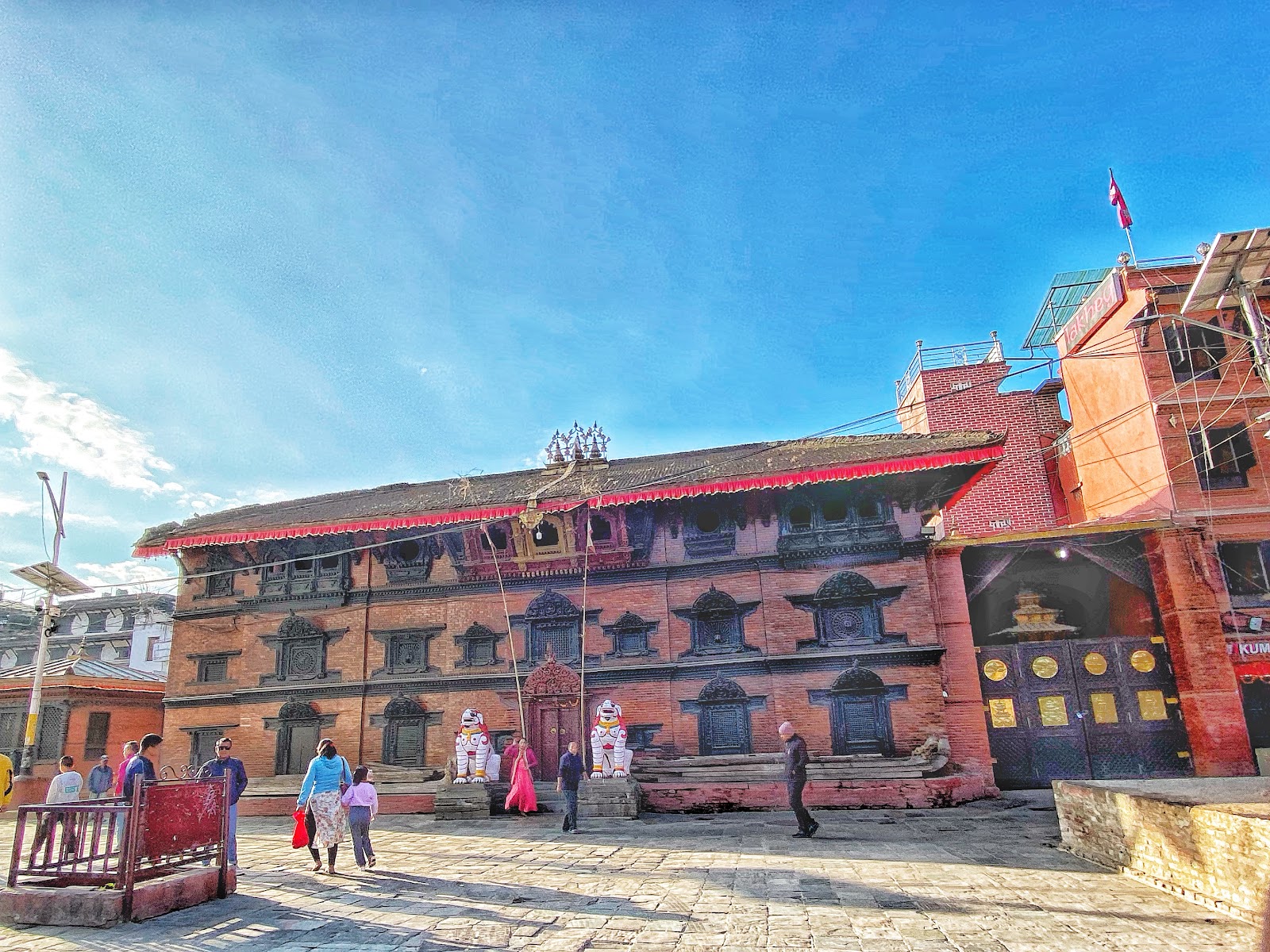












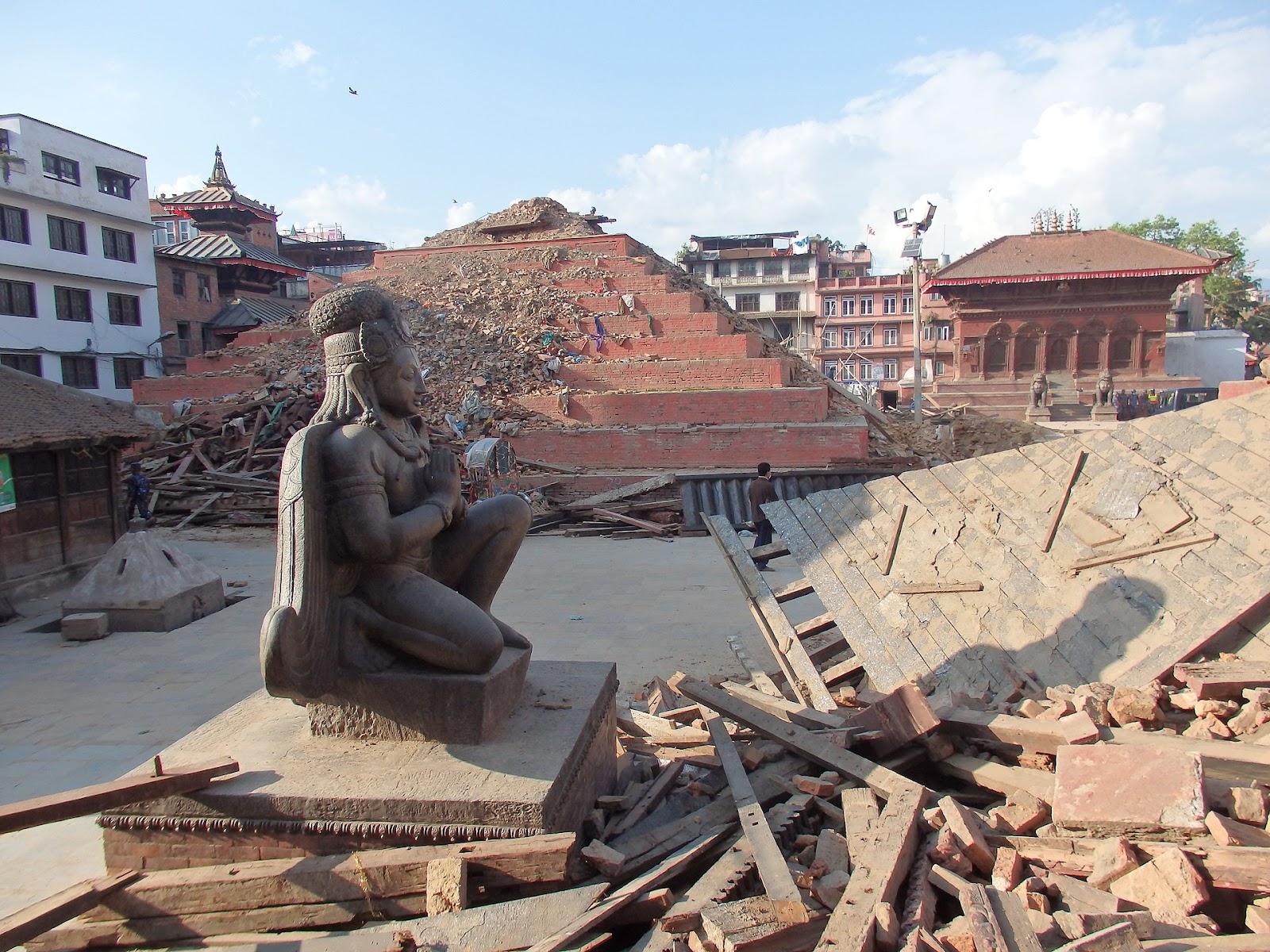



















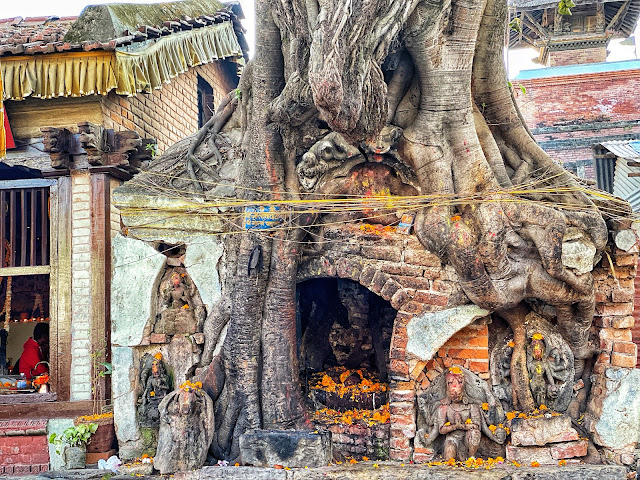




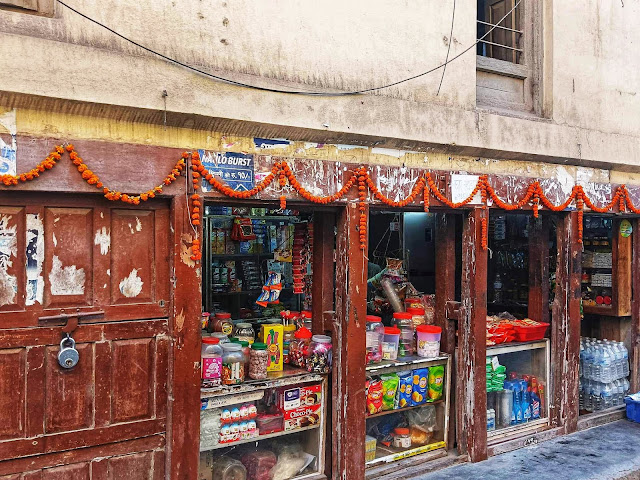

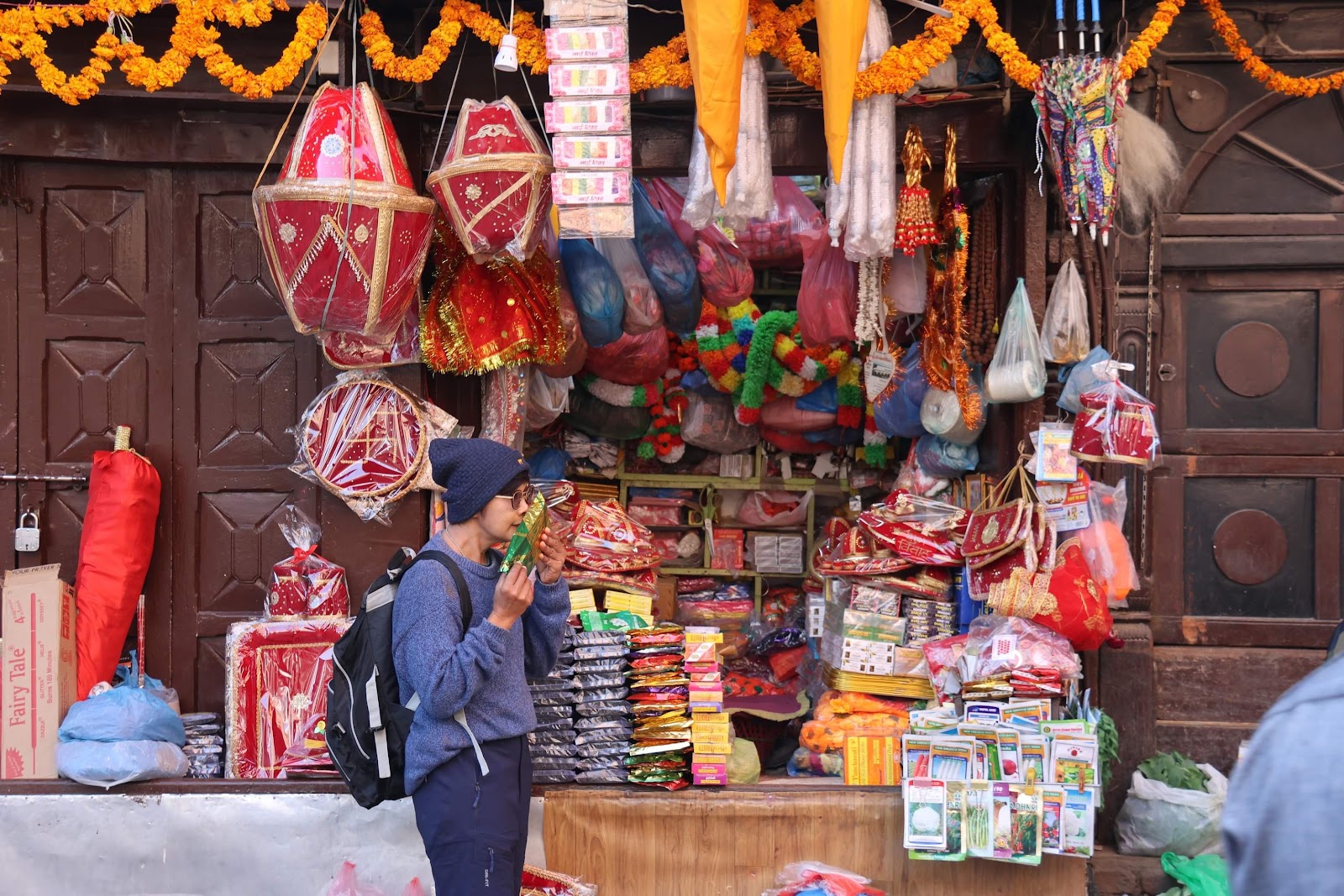










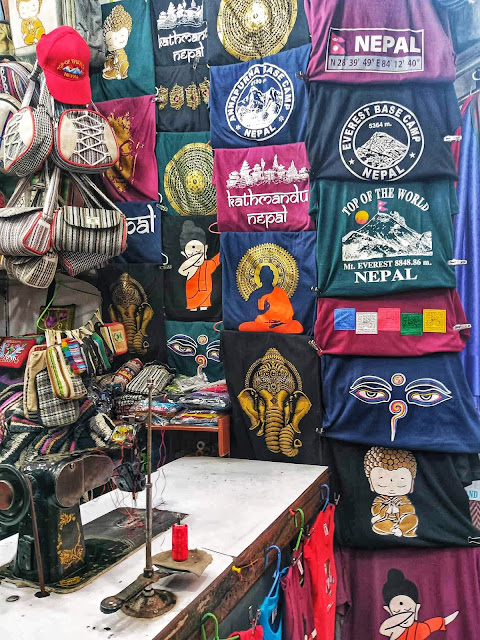








ไม่มีความคิดเห็น:
แสดงความคิดเห็น